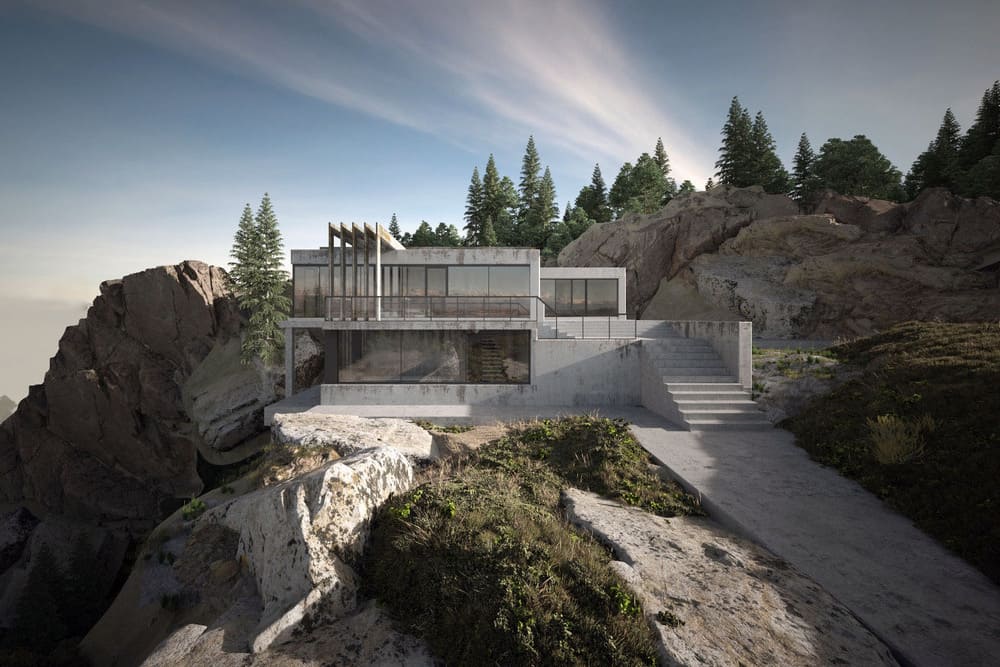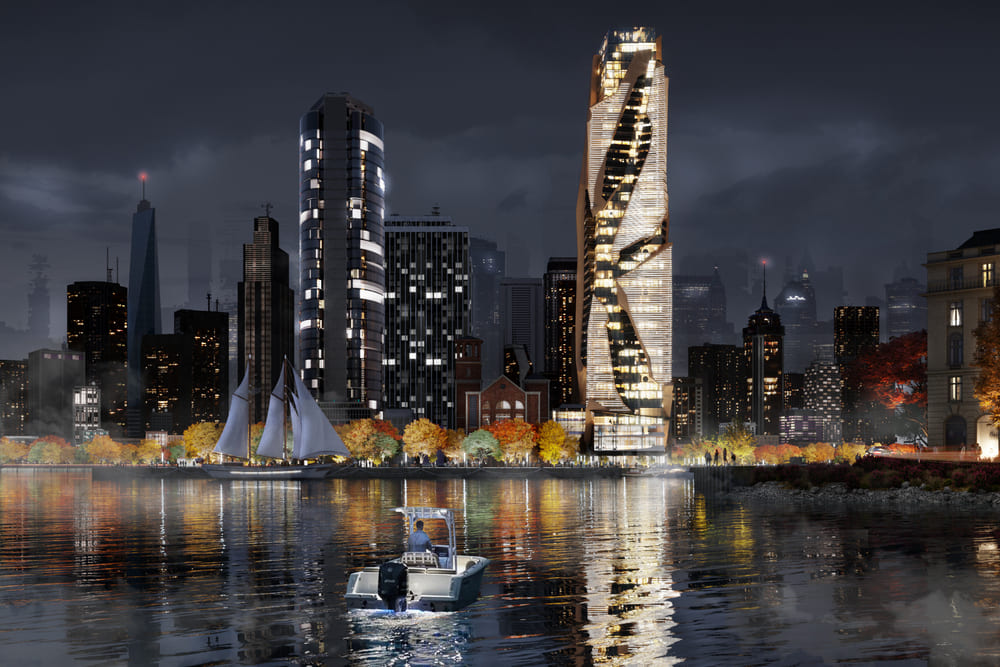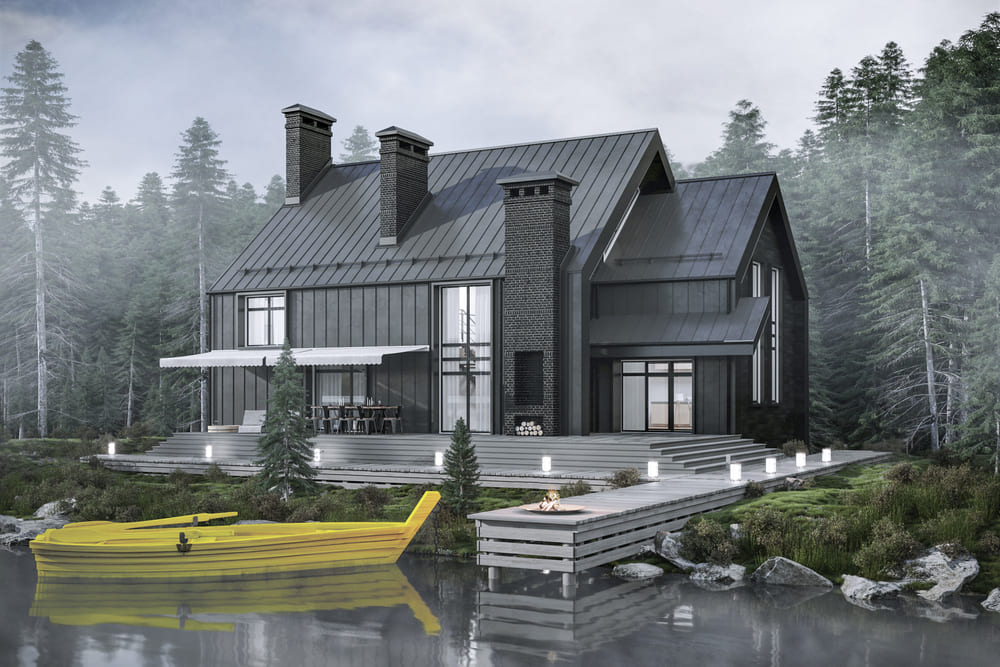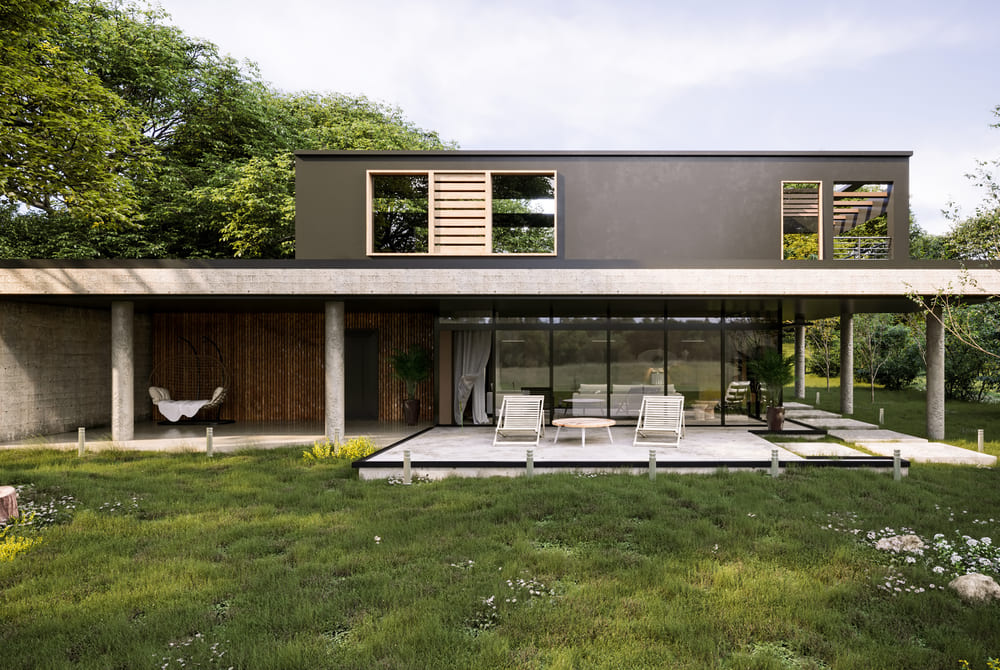Tech
Exterior Rendering in Architecture: Techniques, VR Integration, and the Future

“Dive into the fascinating realm of exterior rendering in architecture. Explore advanced techniques, the immersive world of VR, challenges faced, and a glimpse into what the future holds for this transformative visualization tool.”
Exterior Rendering Unveiled: Creating Stunning Visuals for Architectural Projects
Introduction
The realm of architecture has evolved dramatically over the years. While sketches and blueprints once dominated presentations, today, architects utilize the power of technology to provide immersive, realistic visuals of their designs.
At the forefront of this technological shift is exterior rendering, a technique transforming how we visualize and understand architectural projects. But what exactly is external rendering, and how does it breathe life into architectural designs? Let’s delve into the captivating world of creating stunning visuals.
Exterior Rendering Defined
At its core, exterior rendering produces a two-dimensional or three-dimensional image of a building’s exterior using specialized software. This visual representation offers a realistic depiction of how the structure will appear once constructed, considering factors like materials, lighting, environment, and surroundings.
Unlike traditional sketches, these renders are hyper-realistic, offering clients, stakeholders, and potential buyers a tangible vision of the completed project, down to the smallest detail.
The Importance of Exterior Rendering in Today’s Architectural Landscape
In today’s fast-paced and highly visual society, first impressions are crucial. For architectural firms, presenting a concept is more than just showcasing a structure’s functionality but also about captivating the audience with the beauty and potential of the design.
- Enhancing Client Presentations: A realistic render allows clients to visualize the final product, ensuring they are on the same page as the architects regarding design intent and aesthetics.
- Facilitating Project Approvals: Exterior renders can be instrumental for projects requiring regulatory approval or community buy-in. They provide a clear context picture of the proposed structure, addressing potential concerns or objections.
- Marketing and Pre-Sales: Real estate developers can use high-quality renders for marketing campaigns, attracting potential buyers long before construction.
- Error Identification and Resolution: Exterior rendering also plays a role in the design phase. Architects and designers can identify and rectify potential design flaws or inconsistencies by visualizing the structure in detail.
The Process Behind the Magic
Creating a high-quality exterior render is an intricate process that requires both technical knowledge and artistic flair. The steps typically include:
- Modeling: The first step involves creating a 3D model of the architectural design. This model serves as the base upon which all subsequent work is built.
- Setting the Scene: This step involves adding elements like vegetation, people, vehicles, and surrounding structures to provide context.
- Texture Mapping: To add realism, textures replicating materials like brick, wood, glass, and concrete are mapped onto the 3D model. This process ensures the render reflects the accurate materials intended for the final construction.
- Lighting: Proper lighting is essential to capture the mood and atmosphere of the design. Factors like time of day, shadows, and reflections are meticulously calibrated to produce lifelike results.
- Rendering: This is the computational phase where the software generates the image based on the input data. It’s a resource-intensive step and, depending on the complexity, can take hours or even days.
- Post-Production: Like in photography, the initial render often undergoes post-production in software like Adobe Photoshop. This step involves fine-tuning colors, adjusting brightness and contrast, and adding effects to enhance the final image.
Software Options: The Tools of the Trade
The architectural visualization industry has many software options, each with strengths and niche applications. Some of the most renowned include:
- 3ds Max: Produced by Autodesk, 3ds Max is a versatile tool known for its robust modeling capabilities and extensive plugin architecture.
- SketchUp: Praised for its user-friendly interface, SketchUp is ideal for architects venturing into 3D modeling.
- V-Ray: Often used with other software, V-Ray is a rendering engine celebrated for its advanced lighting capabilities and realistic material simulations.
- Cinema 4D: Known for its seamless integration with other multimedia tools, Cinema 4D is a favorite among professionals in both architecture and the entertainment industry.
Keeping it Real: The Role of Realism in Exterior Rendering
The goal of most exterior renders is realism, but achieving this can be challenging. Here’s why maintaining a high degree of realism is crucial:
- Setting Client Expectations: Overly stylized or unrealistic renders can mislead clients, resulting in dissatisfaction when the actual structure doesn’t match the depicted image.
- Maximizing Engagement: Realistic renders can evoke emotions, allowing viewers to connect with the design more deeply.
- Economic Implications: A true-to-life render can help set appropriate price points by showcasing the property’s potential, especially in real estate.
- Feedback and Revisions: When stakeholders view a realistic representation, they can provide more precise feedback, leading to improved designs.
Advanced Techniques in Exterior Rendering
Introduction to Advanced Techniques
The basics of exterior rendering provide a solid foundation, but architects and designers often employ advanced techniques to stand out truly. These methods ensure the produced visuals aren’t just realistic and artistically captivating.
- High Dynamic Range Imaging (HDRI): HDRI allows a broader spectrum of light intensities in a rendered image. It captures the nuances of real-world lighting conditions, from the brightest sunlight to the subtlest shadow, adding depth and realism to renders.
- Global Illumination: This technique calculates how light interacts with surfaces, including the diffusion of reflected light. International illumination accounts for how soft bounces off walls, floors, and other characters, ensuring the entire scene is lit realistically.
- Ambient Occlusion: A shading method, ambient occlusion determines how exposed each point in a scene is to ambient lighting. The result? Renders with a more pronounced depth, where small corners and recesses appear naturally darker.
- Caustics: Anyone who’s observed light patterns at the bottom of a swimming pool has witnessed caustics. This phenomenon, where light is refracted or reflected by a curved surface, is vital for scenes with water, glass, or other reflective materials.
The Role of Virtual Reality (VR) in Exterior Rendering
With the advent of virtual reality, exterior rendering has taken an immersive turn. VR allows clients to “walk through” a structure before it’s built, offering an interactive experience of the architectural design.
- Enhanced Client Experience: VR provides a first-person perspective. Clients don’t just see the design; they experience it, moving from room to room and observing views from windows.
- Iterative Design: With VR, architects can instantly gather feedback during virtual tours, making real-time changes to improve the design based on clients’ reactions.
- Streamlined Decision Making: Decisions regarding materials, colors, and design elements become easier as clients can visualize changes immediately in the virtual environment.
Challenges in the World of Exterior Rendering
While exterior rendering offers numerous benefits, it isn’t devoid of challenges:
- High Resource Requirements: Advanced rendering can be computationally intensive, requiring powerful hardware setups, especially for larger projects or when employing techniques like global illumination.
- Skill Gap: The plethora of software options, combined with advanced techniques, means a steep learning curve exists. Professionals must constantly upgrade their skills.
- Balancing Realism and Artistry: There’s a thin line between hyper-realistic renders and those that feel cold or sterile. Incorporating a touch of artistry without compromising on realism is a constant challenge.
- Time Constraints: Tight deadlines can be a hurdle, especially in commercial projects. Each rendering iteration requires time, which might be in short supply.
The Future of Exterior Rendering
The domain of exterior rendering is dynamic, with innovations continually reshaping the landscape. Here’s a glimpse into what the future might hold:
- AI-Powered Rendering: With advancements in artificial intelligence, future rendering tools leverage AI to optimize processes, reduce rendering times, and even suggest design improvements based on trends.
- Augmented Reality (AR) Integration: AR, which overlays digital information on the real world, could allow architects to superimpose rendered designs onto existing landscapes. This would be particularly beneficial for renovation projects or urban planning.
- Sustainable Design Visualization: As sustainability becomes a priority, rendering tools might integrate features to visualize environmental impact, energy efficiency, and other green metrics.
- Holodecks: Borrowing a term from science fiction, the future might see spaces where full-scale holographic renders are projected, allowing clients to walk through designs without VR headsets.
Conclusion
With its blend of technology and artistry, exterior rendering has revolutionized architectural visualization. The journey has been transformative from the early days of hand-drawn sketches to today’s hyper-realistic digital visuals.
As tools and techniques evolve, one thing remains certain: exterior rendering will remain an indispensable asset for architects, bridging the gap between imagination and reality.
SEE ALSO: Microsoft Teams Unveils Revamped And Speedier Chat Client For Windows And Mac Users
































